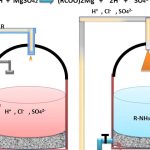
I first mentioned my “installation” of a Winegard Connect because I was exercised about the cabling and mounting scheme Winegard employs. But the company deserves high marks for their response to my concerns, as they quickly had a proposed solution (explained below). While the Connect all-in-one WiFi and cellular get-online system — with the cell service included — is Winegard’s first entry into the marine internet market, they’ve been at it in the RV world for quite some time and the rock-solid RF performance is pretty impressive even if the interface seemed rather bare-bones to me.
The $479 Winegard ConnecT 4G1xM is a WiFi bridge, 4G/LTE modem, and router in a single enclosure. It provides the option to connect either via cellular bandwidth purchased directly from Winegard or via a land-based WiFi network. If you have an existing boat network the Connect can be connected via Ethernet to your network or you can use the WiFi in client devices like your laptop or tablet direct to the Connect.
Winegard offers two basic types of plans, U.S. and Canada or U.S. only. The U.S. only plan is available with a 10gb bucket of data for $65. I quickly convert any plan to cost per gigabyte and at $6.50 per gig this is decent value. The 1, 3, 10, and 20gb plans for $20, $35, $80, and $150 add service in Canada and get as cheap as $7.50 per gigabyte. The multiple options and cost per gigabyte compare favorably to what KVH is offering with their LTE-1 and the single plan of $200 for 20 GB.
The Connect 4G1xM has two WiFi radios, one for connecting to shore-based WiFi and one for client devices on the boat to connect to the unit. Both of these radios are single band 2.4ghz radios. As has been talked about a lot recently, the 2.4ghz band presents some challenges in RF dense areas. So, while the 2.4ghz band comes with greater range than 5ghz, I’m still a little sad to see 5ghz omitted here.
When Ben Ellison and I sat down with Winegard’s leadership at the 2018 Miami Boat Show they stressed their roots. Winegard is based in Burlington, Iowa, and they produce almost everything in-house with an impressive array of capabilities from software engineering to an onsite print-shop.
I covered the process of connecting to a WiFi network on the Connect in my article comparing the interfaces of several WiFi systems, so I’ll focus a little more on the LTE aspects in this article.

The Connect can be mounted either on a standard 1″ 14 marine antenna mount, as can be seen in the photo on Have Another Day, or with an included deck mount adapter that threads into the 1″ 14 hole on the bottom of the unit. The cat5 cable that carries power to the unit and allows connecting to the boat network comes through the hole so you will need to find a mount with a cable slot cutout (like the Shakespeare 4188-SL I’m using) or with a hole large enough to pass the RJ-45 connector through.

A power over Ethernet (POE) injector is included to power the unit and I was happy to see that it’s a 12v model which makes installation easier for most boaters. A cat5 cable runs from the POE injector to the cable coming out of the bottom of the Connect. This one connection is all that is needed between the unit and the POE injector. If you’re going to use WiFi between your device and the Connect, you’re done with the installation. But If you’re using a wired connection to the boat’s network — known as a local area network or LAN — or straight to a computer below, you will plug its cable into the LAN port on the other side of the POE injector.


